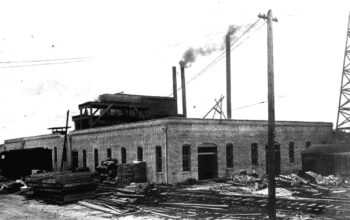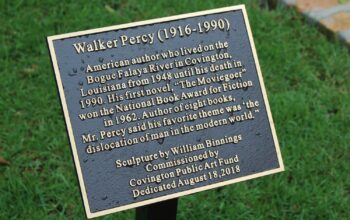Local History segment provided by local historical writer Ron Barthet. This article has been broken up into 4 parts for ease of reading.
View Ron’s blog Tammany Family here.
Covington History: Historical Markers of St. Tammany – Part 1
According to the Historical Marker Project website, there are 45 historical markers in St. Tammany Parish. They share a variety of historical highlights across the area, giving us an idea of the people and places that contributed to early St. Tammany.
Here is their list. You can view the full list and individual markers here: www.historicalmarkerproject.com
Columbia Street
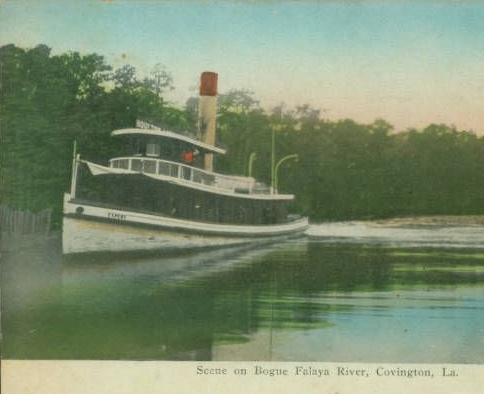
Columbia Street meets the river at the Columbia Street Landing. It was the first place visitors saw when they arrived in Covington. It was also the last stop on land for the area’s principal exports on their way to market via the Bogue Falaya River across Lake Pontchartrain to New Orleans. In 1890, Covington’s new town hall was situated in the ox lot in the middle of the square bounded by Boston, Columbia, Rutland and Florida streets. This block of Columbia Street naturally developed as the principal commercial area in the town.
Steam Powered “Groundhog” Sawmill
The steam engine on display in Houltonville is typical of many such engines employed as portable power plants from the time of their introduction 1847 through the 1930’s. This engine was built by the Geiser Manufacturing Company of Waynesboro, Pennsylvania, in 1908. This was their model “P”, the largest portable engine the Geiser Company ever made. Only 82 such engines were built, and this one is the only known survivor.
The engine was put back into operating condition in 1970 and is capable of running the sawmill attached to it today.The sawmill presently attached to the steam engine is a movable sawmill made in Chattanooga, Tennessee, by the Corley Manufacturing Company, and is commonly called a groundhog mill.
Together with the steam engine it illustrates a small, country steam sawmill typical in America during the last half of the 19th-first quarter of the 20th-century. It was last owned and operated by the Varisco Brothers of Hammond, Louisiana.
Original Lone Star Republic
In 1810 residents of Louisiana’s Florida Parishes rose in an armed insurrection and overthrew the Spanish government. The Independent Republic of West Florida existed for 74 days before being forcibly annexed by American forces on December 10, 1810.
Waldheim Church

Built be German Settlers, the Waldheim Methodist Church was dedicated September 12, 1875 as BONIFACE CHURCH by The Rev. J.B.A. Ahrens, D.D.Presiding elder, Louisiana District German Mission Conference of East Texas and Louisiana Methodist Episcopal Church, South.Services in German and English for Many Years. TABERNACLE of the GERMAN SETTLEMENT CAMP GROUNDS –Erected approximately 100 feet east of the Church under the leadership of THE REV. GABRIEL R. ELLIS. First service held September 22, 1887. Annual Camp Meetings which were held for 20 years drew thousands of persons to worship.
Salmen Lodge
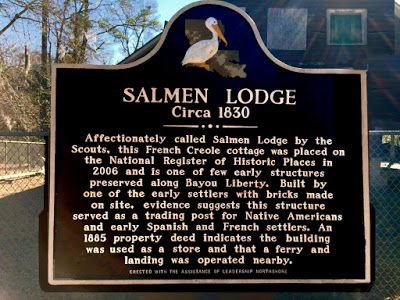
Affectionately called Salmen Lodge by the Scouts, this French Creole cottage was placed on the National Register of Historic Places in 2006 and is one of a few early structures preserved along Bayou Liberty. Built by one of the early settlers with bricks made on site, evidence suggests this structure served as a trading post for Native Americans and early Spanish and French settlers. An 1885 property deed indicated the building was used as a store and that a ferry and landing operated nearby.
Fritz Salmen
This Tablet is erected in memory of Fritz Salmen – A pioneer industrialist who in 1924 gave this land to be used as a Boy Scout camp site. Dedicated to the development of good citizenship of American youth.
Sugar Mill Operation
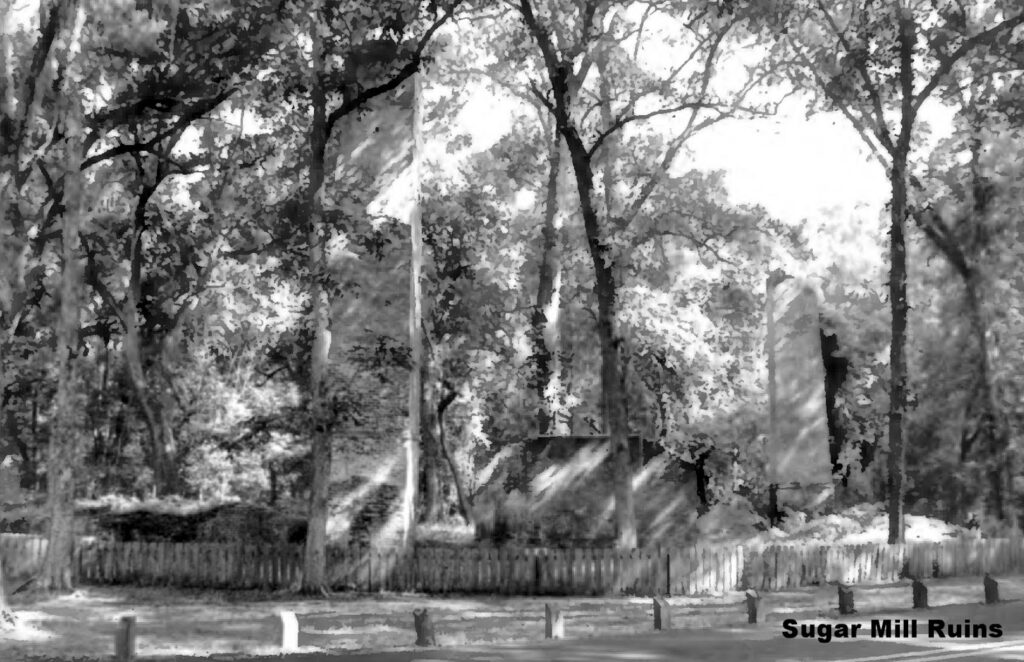
This sugar mill in Fontainebleau State Park operated similarly to other steam-powered mills of the mid 1800’s. Molasses was drawn out of raw sugar cane by heating it in five kettles known as the “batterie.” The cane juice was transferred from the largest kettle called the “”grande” into the next four kettles repeatedly until the sugar was partially crystalized (sic).
Then the sugar is transported in a series of troughs and cooled for 24 hours. The sugar was then put into hogshead barrels with holes on the bottom called Potting-casts. Each hole in the Potting-cast was plugged with crushed cane which drew the molasses away from the sugar and into a cistern. After the molasses was drained away the hogshead barrels of sugar could be shipped by rail or canal to barges on Lake Pontchartrain.
Madisonville Cemetery
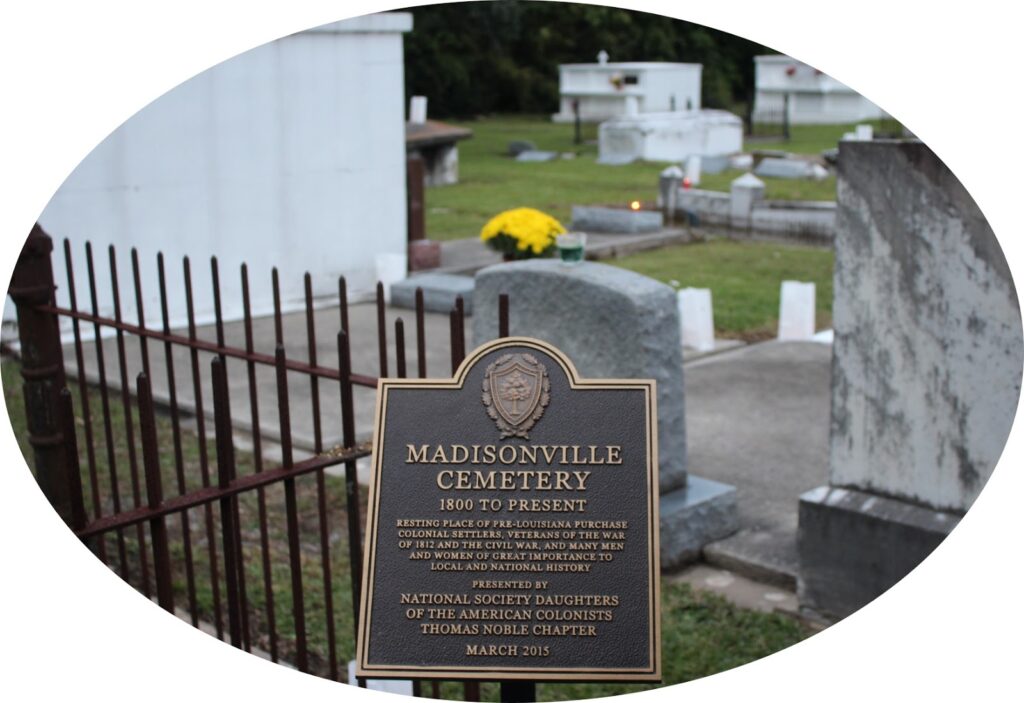
Resting place of pre-Louisiana Purchase colonial settlers, veterans of the War of 1812 and the Civil War, and many men and women of great importance to local and national history.

